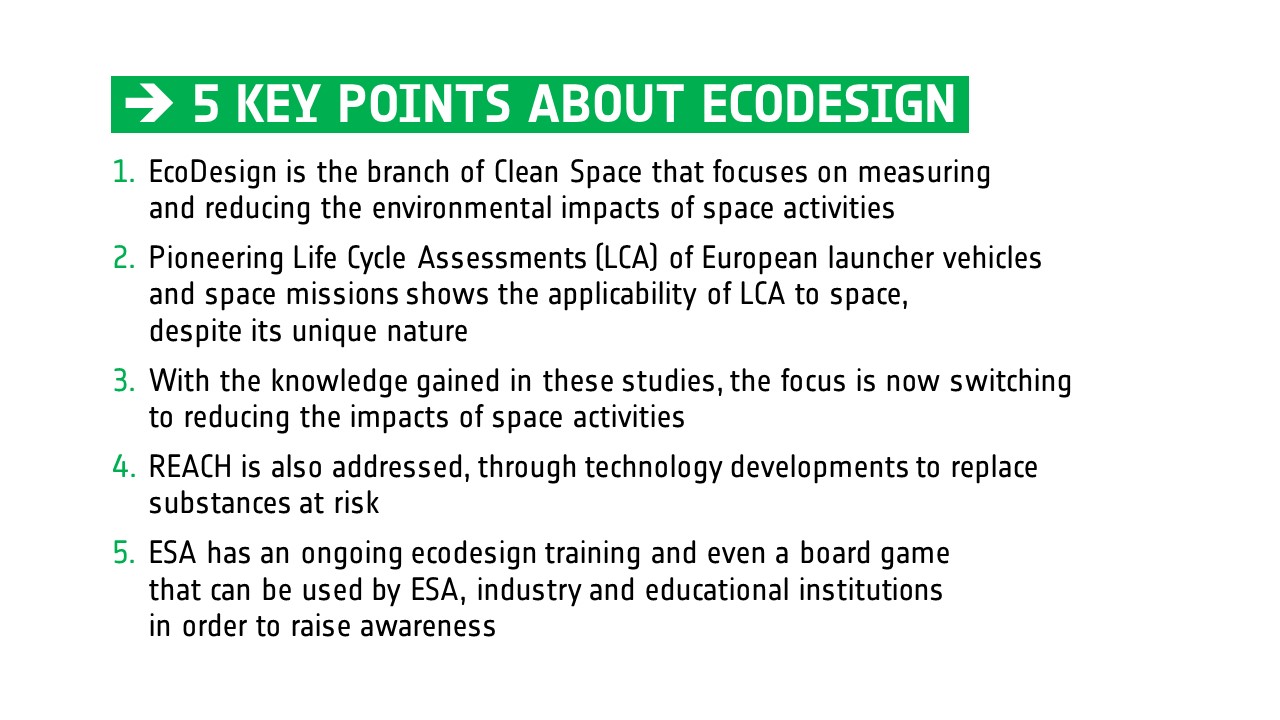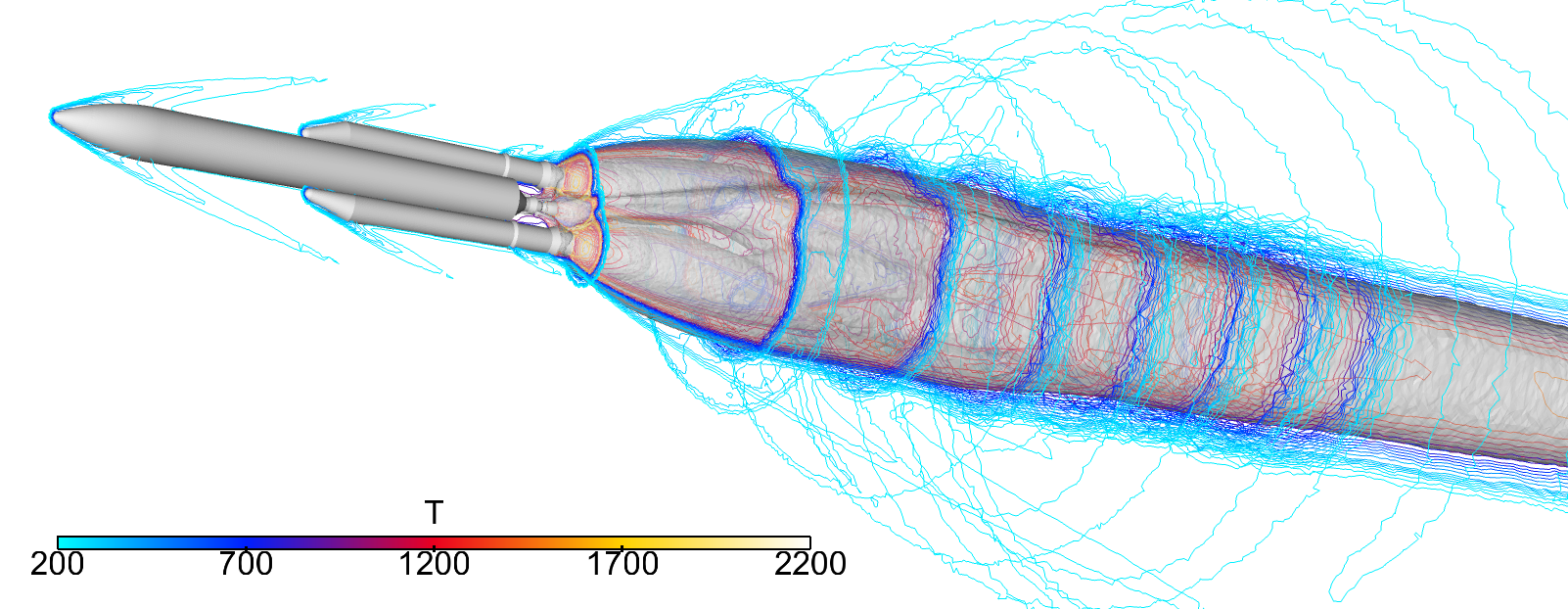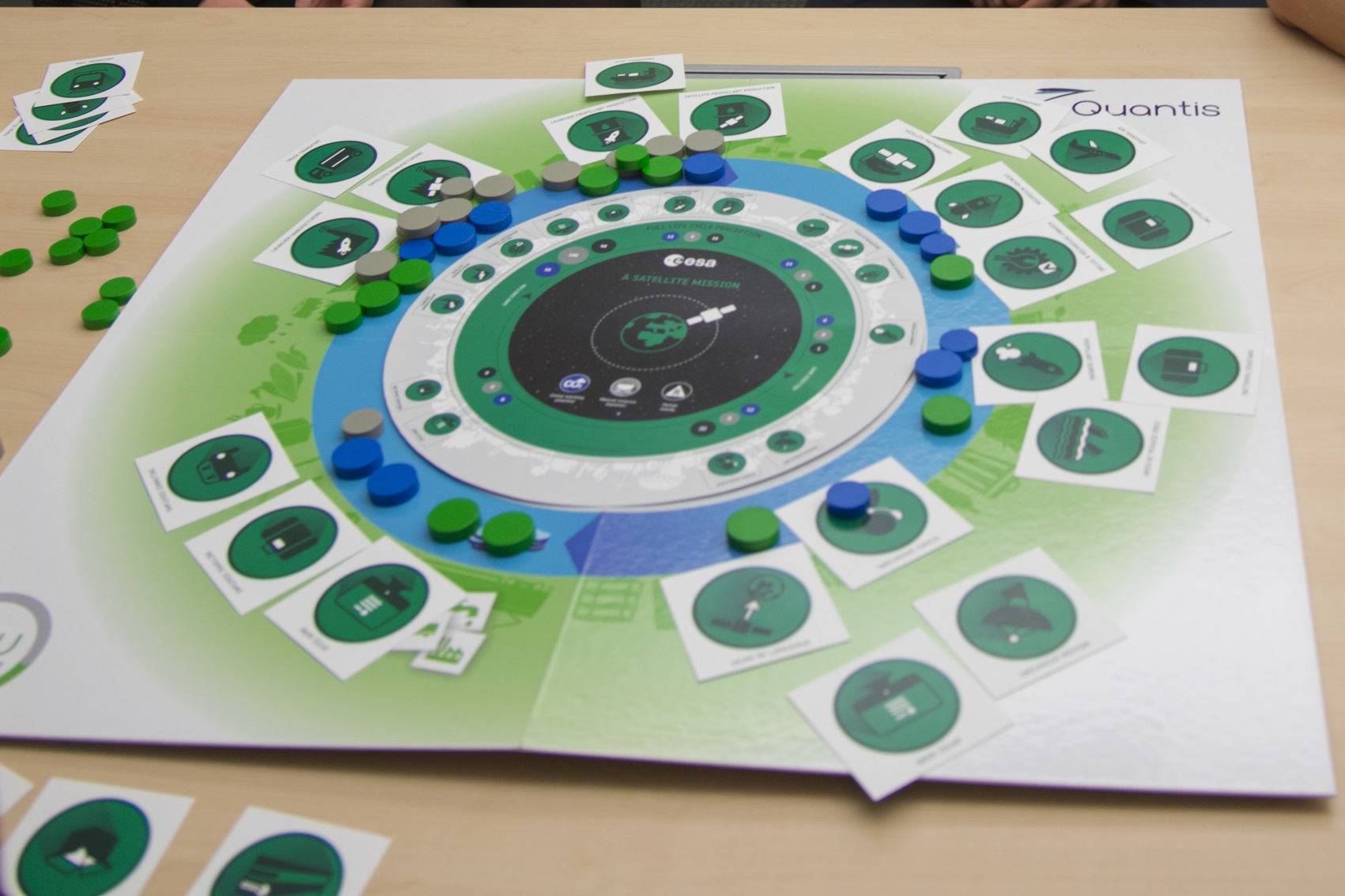 Whilst no formal proposal for ecoDesign will be made at this year’s ministerial, there is still a lot of exciting work on the way in 2017 and 2018 (see Clean Space roadmap for ecoDesign activities here ). Notably, ESA will issue their first invitation to tender (ITT) called GreenSat, the first study worldwide dedicated to designing a satellite in the most environmentally friendly way. Work will also shortly begin performing ecodesign on a launcher fairing. The study, another first in its kind, will look at using Life Cycle Assessment (LCA) results to make design changes such that the environmental impacts are reduced.
Whilst no formal proposal for ecoDesign will be made at this year’s ministerial, there is still a lot of exciting work on the way in 2017 and 2018 (see Clean Space roadmap for ecoDesign activities here ). Notably, ESA will issue their first invitation to tender (ITT) called GreenSat, the first study worldwide dedicated to designing a satellite in the most environmentally friendly way. Work will also shortly begin performing ecodesign on a launcher fairing. The study, another first in its kind, will look at using Life Cycle Assessment (LCA) results to make design changes such that the environmental impacts are reduced.
In 2012, to answer the question, “What is the environmental footprint of launchers?” we carried out LCA studies on the European launcher family, and subsequently on entire space missions. However, we realised that in order to get the full environmental picture, we needed to investigate certain questions in more depth. For example, how do you measure the impact on the atmosphere of a launcher emitting a plume of particles and flying directly through the ozone? How do we model the highly specific materials, processes and propellants used in the space sector? Furthermore, since we’re considering the entire life-cycle of space missions, what is the impact launcher stages falling back in the ocean and satellites reentering the Earth’s atmosphere?

All of these questions have been answered (or are currently being answered) through dedicated studies that have allowed us to collect enough knowledge to develop a handbook. This document provides guidelines on all these issues related to carrying out LCAs in the space sector. In the next couple of months this handbook will be published and complemented by a public database containing specific datasets for space sector LCAs.
With the knowledge now built up on environmental impacts, the emphasis switches to reducing them. This will be done in several ways:
- Ecodesign Tool: Clean Space has developed a tool which enables the environmental impacts of space missions to be automatically calculated (through a sort of mini LCA) during pre-phase A studies in the concurrent design facility (CDF). This will also allow the engineers and mission designer to investigate changing certain options to design the mission in the most environmentally friendly way. Given that many missions at ESA begin in the CDF, environmental considerations will be taken into account from the earliest stage.
- Technology developments. More and more commonly within ESA, these are now including a section on environmental impacts – asking to perform an LCA and propose options to reduce the impacts as much as possible. Two examples of these are friction stir welding and citric acid as a green replacement to nitric acid.
- Future ecodesign studies. As mentioned before, ESA will begin a study performing ecodesign on the launcher fairing and also a study – GreenSat – dedicated to designing an entire space mission with the goal of reducing its impacts as much as possible.
- Ariane 6 launcher development. A requirement has been placed on the prime contractor to perform an LCA of Ariane 6 exploitation and to compare the results to those of Ariane 5.
Building the knowledge inside ESA is one thing, but to have a widespread impact and really make change, it’s vital to communicate on the results and raise awareness. We’ve been proactive on this, organising an ESA training on ecodesign and developing a board game. The latter has been a big success so far and we plan to introduce it in some European universities and also perform an online session for anybody interested.

ecoDesign space – the game
In so many sectors, environmental protection is often at the forefront of marketing and consumer decision marking. We buy fuel efficient/electric cars because they’re greener, we see more and more wind farms around us, yet the idea of applying the same principles to space seems alien.
“It’s too much of a niche”…“Too complex”…The impacts are low anyway”, are the more common excuses. However, whilst the end users of space services may not be pushing the demand for the space sector to go green, we have seen an increased awareness and interest of environmental issues from satellite operators, with Arianespace reporting many requests from customers on the environmental impacts of launch service.
These are EcoDesign’s short to mid term objectives and first steps in a more comprehensive path toward a greener space sector. Space, even if its impacts are low compared to other sectors, should be no exception from the global responsibility we face to fight climate change by reducing our impacts. Not only that, but through the ecoDesign branch, space could even set the example for the others and by thinking differently innovative solutions can be found.





Discussion: 3 comments
Hello,
I am a Project Manager at SP Technical Research Institute of Sweden and I would like to get in touch with someone at ESA working on EcoDesign and LCA of space operations. We are actively involved in biogas and LCA research here in Sweden and I would like to know what is the status at an EU and ESA level (cf. LNG/LBG v LH2 for Arianne 6)
Hi Selim, thanks for the message – sounds interesting. I am working on EcoDesign and you can contact me at cleanspace@esa.int
Very good! I like this information!! Tks!!!